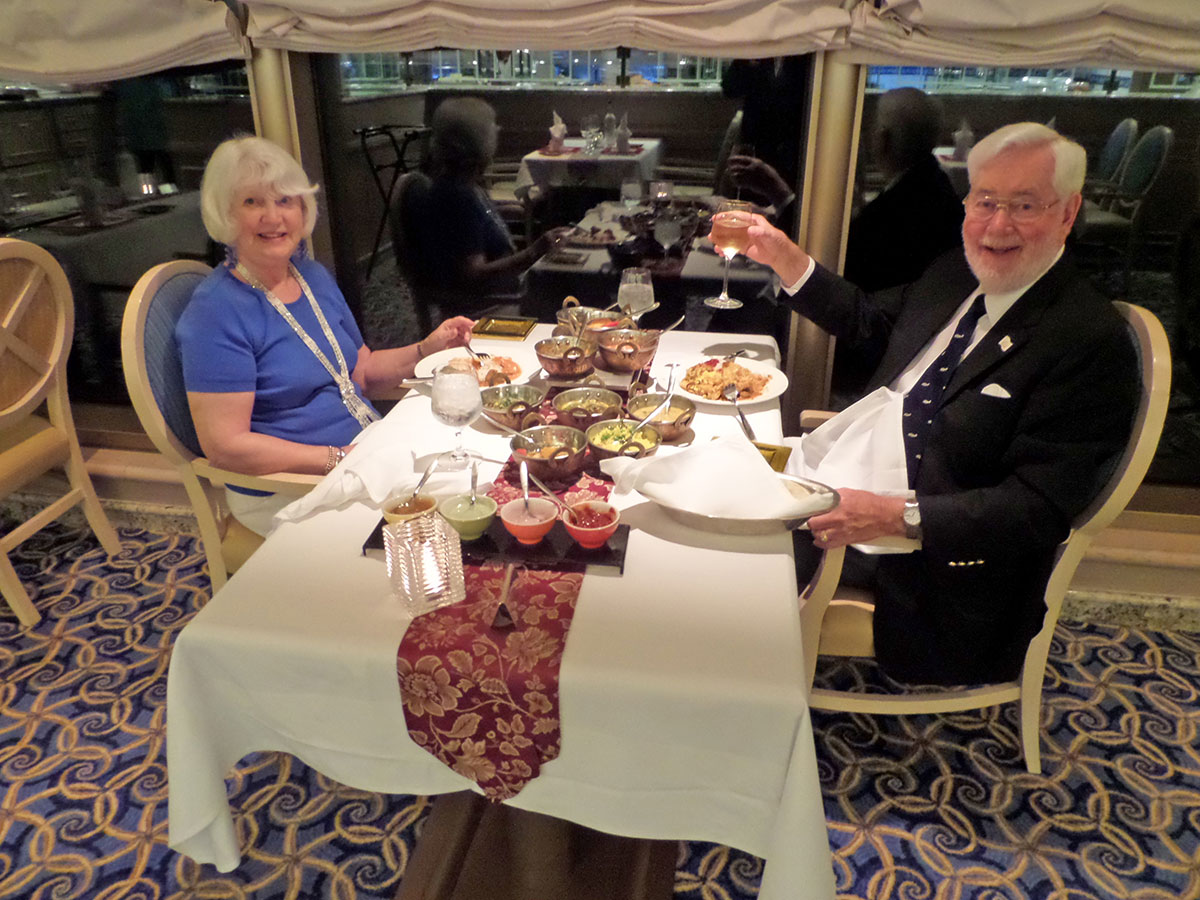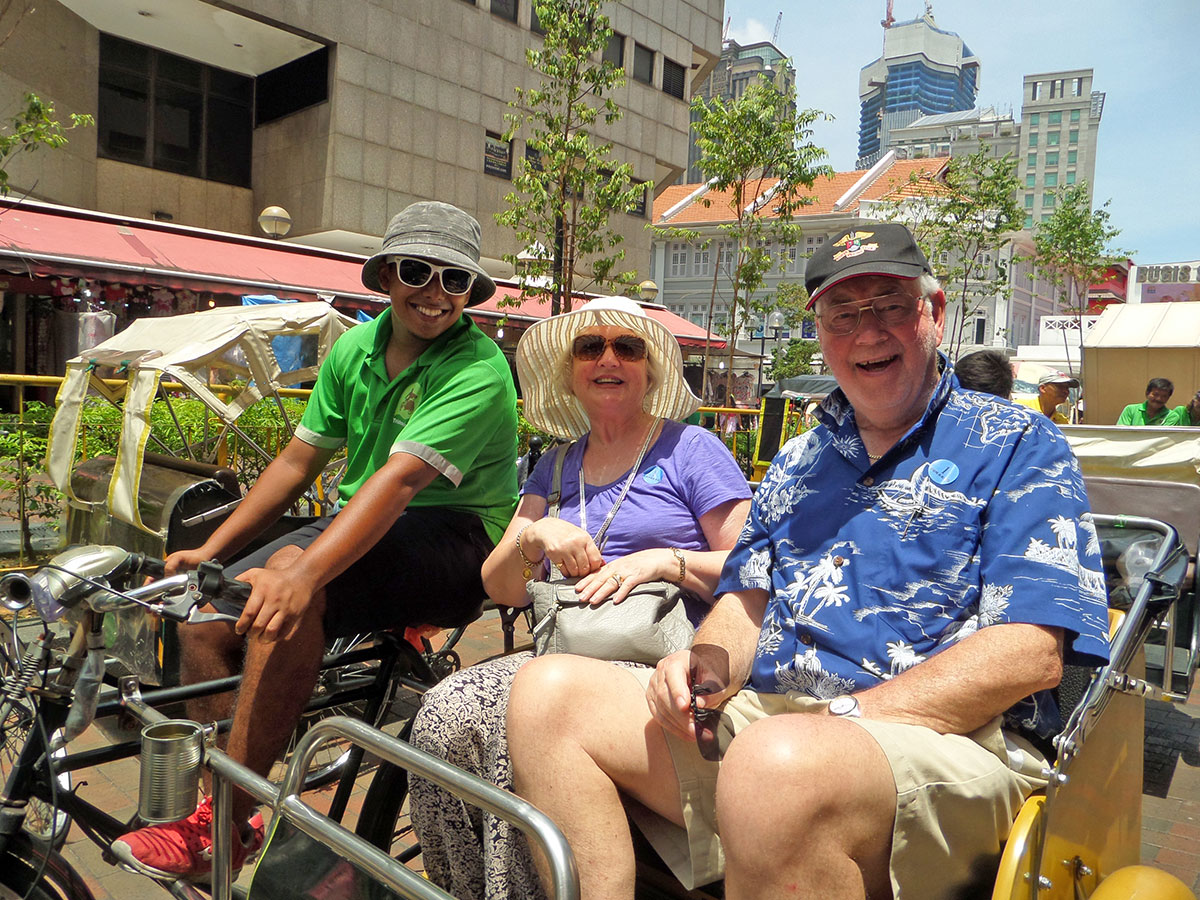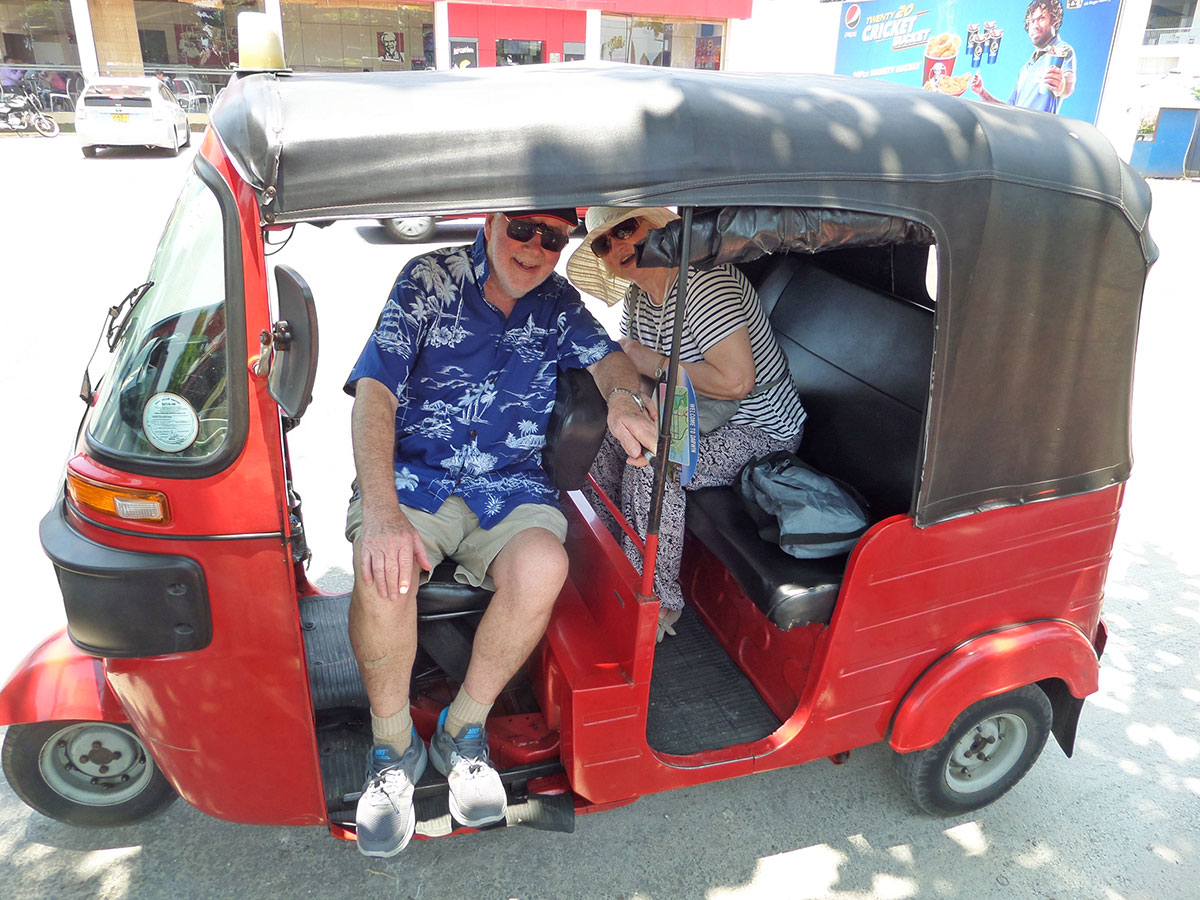Johnstons travel around the world – Part 2

David journaled their cruise in three legs: Sydney, Australia to Hong Kong; Hong Kong to Cape Town, South Africa; and Cape Town to Southampton, England.
On March 4, 2016, David and Marie Johnston boarded the Virgin Australian Boeing 777 at LAX for a 15-hour flight to Sydney, Australia. This was the first 7,395 miles in their journey around the world. The story about the first leg of their cruise aboard the Queen Victoria, from Sydney to Hong Kong, appeared in the July 8 issue of The Friday Flyer. This is Part 2 of their journey around the world.
In Hong Kong, the Queen Victoria picked up many new passengers and set out for the next leg of the Johnston’s journey to Cape Town, South Africa. The first port-of-call in this leg was Singapore. In that clean and modern metropolis, David and Marie took a taxi into the city and did some shopping for a crochet hook, wine and jewelry. They then participated in one of the ship’s excursions of the city, which provided a visit to a street market, a ride in a “trishaw” and a stop at Raffles Hotel for cocktails. Raffles is a colonial-style luxury hotel established in 1887.
David says, “All the time we were in the tropics, the temperature hovered around 100 degrees with very high humidity. In both Hong Kong and Singapore, the harbors were full of large ships.”
Their next stop was Penang Island, Malaysia, where it appeared the Queen Victoria was the only ship in the harbor. David says they didn’t find anything of interest at the large market, other than the opportunity for Marie to get free Wi-Fi at Starbucks.
Next up was their early morning arrival in Colombo, Sri Lanka, an island country (formerly Ceylon) near southeast India. They did some shopping, rode in a “putt putt” (three-wheeled cab that seats two passengers) and ate at a seafood restaurant on the beach.
As they entered the Indian Ocean, the ship’s commodore sent a letter to all of the passengers warning them about the possibility of pirates being in the area.

As the Queen Victoria entered its home port of Southampton, England on May 10, passengers could look back to see the Queen Mary 2 and the Queen Elizabeth emerging close behind in the heavy fog. Photos provided by David Johnston
“He instructed everyone, passengers and crew, to darken the ship at dusk and no one was to be outside on Deck 3,” says David. “Also, the crew began to install high-pressure hoses to repel pirates in case of being attacked, and he stressed that a Royal Navy officer was on board to coordinate with the Royal Navy in case of trouble.”
It would be almost 2,000 nautical miles and several days before the ship would reach Port Victoria, Seychelles. During this time, on April 10, the ship crossed the Equator. It’s traditional among seafarers to hold a special ceremony whenever a ship crosses the Equator, and certain initiations are carried out on those who have never crossed the line before. David calls them “sprogs,” a British term for rookie.
He describes this ceremony by saying, “The sprogs are paraded, they kiss a fish (in this case an ice sculpture), then are slathered with ugly stuff and thrown into the pool. The crew are treated very much the same. Afterward, the crew empty the pool, scrub it out until it’s shining and then refill it. All this happens in the hot afternoon sun.” (The Johnstons, of course, had already crossed the Equator twice earlier in their trip.)
They arrived in Victoria, Seychelles, the next day. The 115-island country lies more than 900 miles east of mainland East Africa. The Johnstons found Port Victoria to be “very hot, very humid, very lovely, very scenic, but with no Wi-Fi.” They walked through town in the morning and noticed a U.S. warship anchored near the harbor.
“In the afternoon, we visited a hotel about an hour away. We had hoped to dip our feet into the Indian Ocean, but it was raining so hard we stayed under shelter,” says David. Instead, they enjoyed one of their few dinners off ship – Indian curry lamb and shrimp in the hotel restaurant.
They next day they made port in Port Louis, on the neighboring island of Mauritius. They visited the local market; then took a taxi to a botanical garden and sugar cane farm, where they got to sample the local rum.
On April 15, they enjoyed sunbathing on the white sand beach at Renunion Island and finally got to dip their feet in the Indian Ocean. They celebrated Marie’s birthday April 18 with champagne and hors d’oeuvres in a box seat of the shipboard Queen Victoria theater, and she was given a birthday cake at dinner.
Their next stop was Port Elizabeth, South Africa, where they took a bus tour of a wild animal park to see elephants, zebras, warthogs, deer and more.
When they arrived in Cape Town, South Africa, the weather was so bad they couldn’t see the city’s iconic Table Mountain and Lion’s Head peak. The tour they took the next day to the top of the mountain finished up with a drive along the shore; however, visibility was still limited. After returning to the ship, the commodore informed passengers the harbor was closed due to high winds and they wouldn’t be able to leave for several hours.
“He warned us there would be very high winds and waves of up to 30 feet, so people should take precautions and, if necessary, take Dramamine,” says David. “We were allowed to leave at 8 p.m., the storm lasted all night and Marie did not feel well.”
Now headed north off the west coast of Africa, the ship’s commodore took time aboard ship on April 25 for an Anzac Day (Australia and New Zealand Remembrance Day) ceremony in Walvis Bay, Namibia, which included a cocktail party.
At this point, the ship turned far out to sea and sailed past St. Helena and Ascencion, volcanic tropical islands in the South Atlantic Ocean owned by the British. It stopped briefly in Mindelo, St Vincent Island, Cape Verde, where David and Marie took a two-hour bus tour to the high point of the island and then to a beach where they tried the local rum.
By May 5, they were in Tenerife, the largest and most populated island of the seven Canary Islands off the coast of Spain. They had a city tour and noticed that Tenerife’s unusual opera house was similar in design to the Sydney Opera House.
Their last stop before reaching Southampton, England was the Portuguese island of Madeira. “This was the nicest city/island we visited,” says David. “We had a tour up the mountain, where the roads were so steep and twisty I don’t know how the driver managed the road to the restaurant.”
They arrived in Southampton on May 10, followed into the harbor in heavy fog by the Queen Mary 2 and the Queen Elizabeth cruise ships. This concluded the third leg of their journey from Cape Town to Southampton, a distance of 8,797 miles.
From Southampton they flew to Ireland, where they visited family and friends and traveled around the Emerald Isle from May 10 to June 1. “Our time in Ireland, as always, was wonderful,” says David. (A prior story about the Johnston’s history in Ireland appeared in the March 11, 2016 issue of The Friday Flyer.)
Of their trip David says, “It was absolutely incredible; we enjoyed it so much and met a number of interesting and nice people . . . We finished our journey by flying Aer Lingus from Dublin to Los Angeles on its newly instituted DUB to LAX flight. In all, we traveled a total of 29,673 miles around the world in three months.”
Previous Article
News Briefs




 April 19, 2024
April 19, 2024